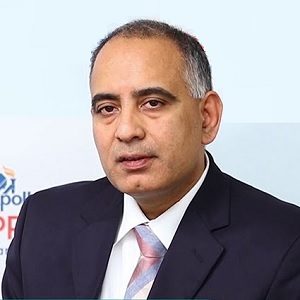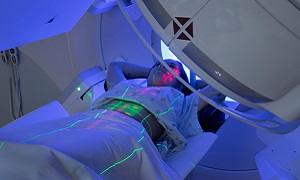Best Doctors in India for Squamous Cell Carcinoma Treatment
- Medical Oncologist, Gurugram, India
- Over 20 years’ experience
Profile Highlights:
- Dr. Randeep Singh has trained extensively in managing cancer patients at the prestigious Tata Memorial Hospital, Mumbai.
- After spending over 20 years in this field, he has a vast experience in breast, lung, and gastrointestinal cancers.
- Throughout his career, Dr. Randeep Singh has had over 40 publications in national and international journals.
- He has also attended and presented various scientific papers in national and international journals.
- Surgical Oncologist, Gurugram, India
- Over 10 years’ experience
Profile Highlights:
- Dr. Shilpi Sharma is a highly experienced surgeon and oncologist who has previously worked in prestigious institutions such as Tata Memorial Hospital, and National Cancer Institute.
- Throughout her career, she has conducted various high-quality research in the field of head and neck cancers. Dr. Shilpi Sharma has also been part of various randomized and nonrandomized trials and has also been involved in clinical and translational research.
- She is also a member of ICMR guideline committee which formulated the ICMR guidelines on tongue cancers.
- Medical Oncologist, Chennai, India
- Over 40 years’ experience
Profile Highlights:
- Dr. Bellarmine Vincent Lawrence is a well-known Medical Oncologist in South India with a specialization in the treatment of breast cancers.
- He provides overall both pre and post-operative treatment of breast cancer that includes diagnostic, therapeutic as well as palliative care.
- He also provides services for other types of cancers including blood cancer and does procedures like Chemotherapy for the treatment and biopsies for the detection of cancer.
- Medical Oncologist and BMT Specialist, Chennai, India
- Over 25 years’ experience
Profile Highlights:
- Dr. T. Raja is a Medical Oncologist from the Tamil Nadu state with 25 years of know-how in this field.
- He has proficiency in Cancer Screening, Chemotherapy, PICC Line Insertion, Bone Marrow Transplantation, Stem Cell Transplantation, Pap collection, lymphoma, Renal Cell Cancer management, and Head and Neck Tumor.
- Dr. Raja was the Principal Investigator for several clinical studies, a published author for journals, and a teacher.
- Medical Oncologist, Chennai, India
- Over 28 years’ experience
Profile Highlights:
- Dr. Sankar Srinivasan is one of the top Medical Oncologists in India with proficiency in cancer management for about 28 years.
- He got certified in Internal Medicine, Medical Oncology, and Hematology from American Board to enhance his skills.
- Dr. Srinivasan is placed in the best 10% of the Hematologists boards.
- He is an active member of several International Medical Association Boards.
Best Hospitals in India for Squamous Cell Carcinoma Treatment
CARE Hospitals, Hyderabad
- City: Hyderabad, India
Hospital Highlights:
- CARE Hospitals were established in the year 2000, by CARE Group.
- The multispecialty hospital has 435 beds, including 120 critical care beds, with an annual inflow of 180000 outpatients and 16,000 in-patients.
- The hospital provides specialty medical services in Cardiology, Cardiothoracic Surgery, Pediatric Cardiology, Pediatric Cardiothoracic Surgery, Neurology, Neurosurgery, Nephrology, and Urology.
- The hospital has the first dual source, 128 slice CT scanner (for high precision cardiac imaging) – the first of its kind in south India.
- The hospital offers a wide range of accommodation facilities for the convenience of its varied patient base, ranging from general wards to super deluxe rooms.
Fortis Hiranandani Hospital, Mumbai
- City: Mumbai, India
Hospital Highlights:
- Fortis Hiranandani hospital was established in 2007.
- The hospital is an advanced tertiary care, multi-specialty hospital equipped with 149 beds.
- The hospital is equipped with a super ICU to provide emergency medical care to critically ill patients.
- The hospital is NABH accredited.
- The critical care facility in the hospital is augmented with the state-of-the-art facilities that facilitate speedier diagnosis and efficient monitoring.
- The hospital provides specialty medical services in cardiology, orthopedic science, pediatric science, neurology, diabetic care, urology, nephrology, ENT, obstetrics, gynecology, cosmetic surgery, bariatric surgery, neuro and spine care.
Fortis Hospital, Anandpur, Kolkata
- City: Kolkata, India
Hospital Highlights:
- Fortis Hospital, Anandapur, Kolkata is a world-class super-speciality equipped with the latest technologies in the medical world.
- The hospital is NABH accredited.
- This state-of-the-art facility specializes in cardiology and cardiac surgery, urology, nephrology, neurosciences, orthopaedics, digestive care, emergency care and critical care.
- The hospital, governed by integrated Building Management System (IBMS), has a pneumatic chute system, for quick vertical and horizontal transportation between floors, facilitating speedy transfer of patient specimens, documents, reports, and medicines to the concerned departments.
- The hospital also has a nephrology department with over 28 advanced dialysis units.
Fortis Hospital Banerghatta, Bengaluru
- City: Bengaluru, India
Hospital Highlights:
- Fortis Hospital Bannerghatta, Bengaluru was established in 2006.
- The hospital is a 276 bedded multi-specialty tertiary care facility.
- The hospital specializes in cutting-edge medical technology and dedicated patient care services.
- The hospital is equipped with state-of-the-art technologies like trans-radial angioplasty, trans-abdominal cardiac surgery, and computerized TKR navigation surgery.
- The hospital provides specialty medical services in cardiology, cardiac surgery, orthopedics, neurology, neuro-surgery, GI, and Minimal Access Surgery (MAS).
Gleneagles Global Hospital, Parel, Mumbai
- City: Mumbai, India
Hospital Highlights:
- Gleneagles Global Hospital The 450-bed facility comprises of 17-stories, housing state-of-the-art infrastructure, and advanced medical care facilities.
- The hospital offers end-to-end clinical, surgical, and diagnostic services. It is equipped with a team of eminent medical professionals aided by qualified nurses and medical staff
- The Hospital offers advanced Endoscopic procedures, Hepatobiliary and Liver Surgeries, Surgical and Medical Gastroenterology, Bariatric Surgery, and Robotic surgery.
- The hospital is a center of excellence for Orthopedics, Joint Replacement, Knee Replacement, and Hip Replacement surgery.
Jaypee Hospital, Noida
- City: Noida, India
Hospital Highlights:
- Jaypee Hospital is the flagship hospital of the Jaypee Group.
- This hospital has commissioned 525 beds in the first phase and has been planned and designed as a 1200 bedded multi-specialty facility.
- It holds the accreditation of the NABH and NABL.
- The hospital has state-of-the-art infrastructure equipped with the latest technologies and modern equipment like 64 Slice PET CT, Dual Head 6 Slice SPECT CT, Gamma Camera, and Da Vinci Robotic Surgery for comprehensive robotic surgical solutions.
- It has special Centers dedicated to the major specialties to provide hassle-free and high-quality clinical care.
Manipal Hospital, Dwarka, Delhi
- City: New Delhi, India
Hospital Highlights:
- Manipal Hospitals, Dwarka, is a super-specialty hospital in Dwarka, New Delhi, which is a part of Manipal Hospitals Group.
- The hospital aims to provide the best treatment on par with international standards at a fraction of the cost.
- Equipped with 380 beds, the hospital is also one of the new age hospitals which are equipped fully with state-of-the-art infrastructure, cutting-edge technology as well as the latest and advanced clinical practices. The hospital also has 13 modular Operation theatres with 118 beds which are solely meant for critical care.
- The hospital comprises internationally acclaimed doctors and highly professional and experienced hospital and medical staff who are able to provide preventive, therapeutic, and diagnostic services all under one roof.
Pushpawati Singhania Hospital & Research Institute, New Delhi
- City: New Delhi, India
Hospital Highlights:
- Established in 1996, Pushpawati Singhania Research Institute is one of the top hospitals in the NCR region, as well as one of the top facilities in India for gastroenterology. The hospital is one of South Asia’s first institutes in medical and surgical treatment for diseases related to digestion.
- The hospital is equipped with state-of-the art facilities coupled with the latest equipment as well as renowned consultants from various parts of India as well as other parts of the world.
W Pratiksha Hospital, Gurgaon
- City: Gurugram, India
Hospital Highlights:
- W Pratiksha Hospital, Gurugram, is one of the best hospitals in the NCR region. It is also a top hospital in India for IVF. Since its inception, the hospital has performed over 5500 successful IVFs. The hospital also specializes in gynecology.
- With over 20 years of experience in providing quality healthcare, the hospital is known as one of the most trusted and valued health providers in India.
- Equipped with world-class medical facilities and advanced technology, the hospital’s doctors and clinicians also have a track record of delivering excellent results. The hospital is also known for focusing on preventive well-being as much as on curative treatment.
- The hospital has earned the trust of its patients, by providing the best available treatments at affordable costs.
Narayana Superspeciality Hospital, Gurugram
- City: Gurugram, India
Hospital Highlights:
- Situated near DLF Cyber City, Gurugram, Narayana Superspecialty Hospital is one of the top medical facilities in the Delhi NCR region, catering to the needs of the people. Known for its commitment to quality medical care and patient service, the hospital is a state-of-the-art facility with planned and well-equipped sections, which includes a spacious OPD area as well as comfortable patient rooms.
- It is the closest super-specialty hospital from Indira Gandhi International Airport towards Gurugram, and also the nearest super specialty hospital from DLF Cyber City. It is also close to major residential areas in Gurugram.
- It is part of the renowned Narayana Health Group. Established in 2000, by Dr. Devi Shetty, a renowned cardiac surgeon, it has grown to be one fo India’s leading healthcare groups.
Squamous Cell Carcinoma
Squamous Cell Carcinoma is a common form of skin cancer, which is found in areas of the body that have been damaged by the sun’s UV rays or tanning beds. The exposed skin can include skin in the head, neck, chest, upper back, lips, ears, legs and hands.
Unlike other types of skin cancer, Squamous Cell Carcinoma (SCC) is a slow-growing skin cancer. It can however spread to tissues, bones as well as the lymph node, where it can become quite difficult to treat. Although usually not life-threatening, it can be quite aggressive. It can however be easy to treat if it is caught early. If it is left untreated, Squamous Cell Carcinoma of the skin might grow large and spread to various parts of the body, which can lead to various complications.
Symptoms
Squamous cell carcinoma of the skin usually occurs on sun-exposed skin, such as the scalp, the backs of your hands, your lips or your ears. However, it might also occur anywhere on the body, including inside your mouth or the bottoms of your feet. It may even occur in your genitals.
It can have several signs and symptoms which include:
- A firm and red nodule
- A new sore or raised area on an old scar or an ulcer
- A flat sore with a scaly crust
- A red and raised patch or wart-like sort on or in the anus located on your genitals.
Causes and risk factors
Mutations that occur in skin cell DNA leads to skin cancer. These changes can cause abnormal cells to multiply out of control. When this occurs in the squamous cells, the condition is termed as SCC.
UV radiation is the most common known cause of DNA mutations, leading to skin cancer. UV radiation can come from sunlight or tanning lamps and beds.
Though frequent expose to UV radiation increases the risk of skin cancer, the condition can also develop in people who are not spending much time in the sun or tanning beds. Such people might be genetically predisposed to skin cancer or they might be having a weaker immunity, which increases their likelihood of getting skin cancer. Patients who are receiving radiation treatments for other skin conditions can also be at risk of skin cancer.
Having fair skin, light-colored hair and blue, green or gray eyes is a risk factor for SCC. Having long-term exposure to UV rays is the most common risk factor. Few other risk factors include living in sunny regions or at a high altitude, having a history of being exposed to chemicals, having a history of multiple severe sunburns.
Diagnosis
Tests and procedures which are used for diagnosis of squamous cell carcinoma of the skin can include:
Physical exam
Removing a sample of tissue for testing
For confirming squamous cell carcinoma of the skin diagnosis, your doctor will be using a tool to cut away some or the entire suspicious skin lesion also called a biopsy. The type of skin biopsy which you undergo depends on your particular situation. The tissue is sent to a laboratory for examination.
Treatment
Treatment is based on multiple factors, such as the extent as well as the severity of your cancer, your age, your overall health, the location of cancer.
There are many treatments that can be performed as in-office procedures. These include:
Mohs’ micrographic surgery
In Mohs’ micrographic surgery, your doctor removes the abnormal skin using a scalpel, along with some of the surrounding tissue. This sample is then immediately examined using a microscope. If cancer cells are found in the sample, this process is repeated until no cancer cells are found.
Electrosurgery
Electrosurgery, which is also known as curettage and electrodesiccation, involves scraping off cancer as well as burning the skin for killing cancer cells. Typically this process is done more than once for ensuring thorough treatment as well as complete removal of cancer.
Excisional surgery
Excisional surgery, during which your doctor removes your cancer cells as well as a thin layer of healthy skin, in the surrounding area. Stitches are used for closing the wound. After this, the sample is sent to a laboratory to ensure the entire cancerous area has been removed.
Radiation
Some doctors might also use photodynamic therapy, or laser surgery and topical medications for treating SCC. However, the US Food and Drug Administration have not approved such methods for treating it.
Once SCC has been treated, it is important that you attend the follow-up visits with your doctor. SCC can return and therefore, it is important that you monitor your skin for any precancerous or cancerous areas at least once a month.
Prevention
To reduce the risk for SCC, one can follow these tips:
- Limiting exposure to the sun, especially during 10 am and 4 pm
- Wear sunscreen while going out in the sun
- Wear sunglasses that provide UV ray protection
- Wearing a hat and covering the skin while working outside
- Check the skin every month for any abnormal growths
- Protecting the skin during winter as winter rays can be especially dangerous
- Avoid tanning beds and lamps
- Consult a dermatologist once a year, for a full-body skin check


















